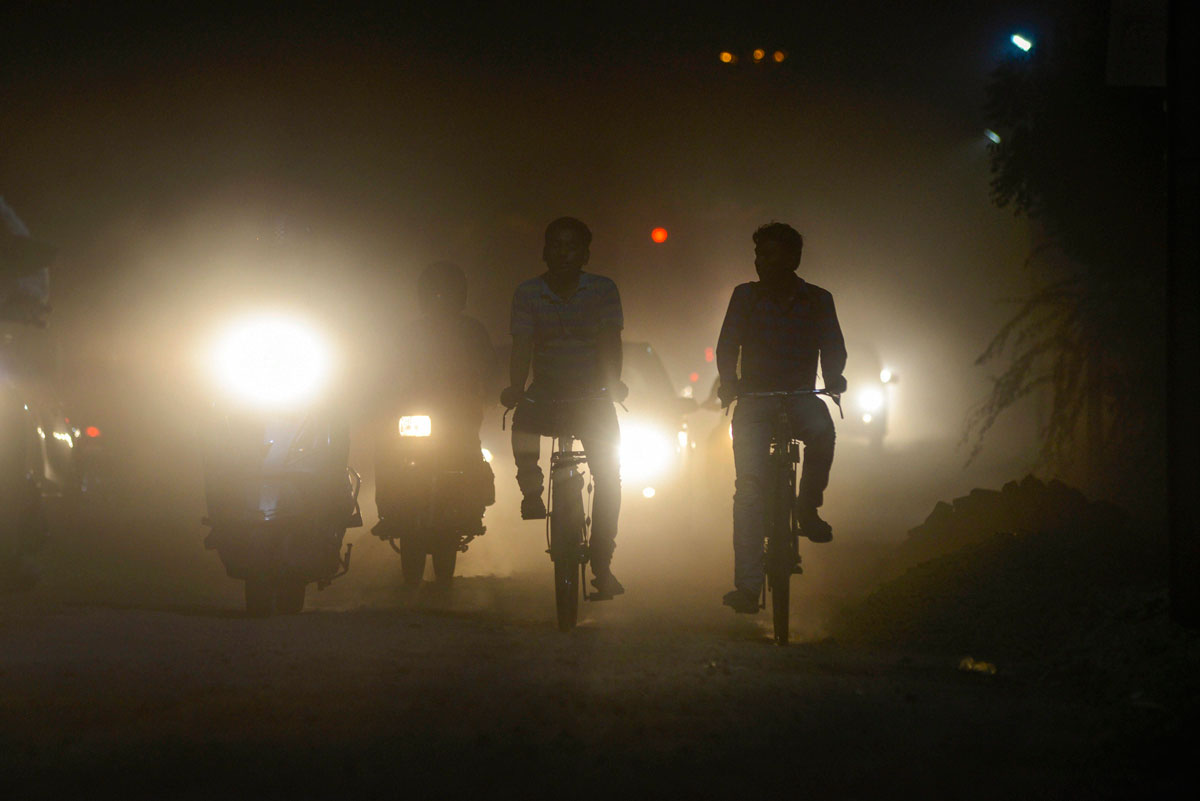Gov’t has Made ‘Serious’ Efforts to Curb Air Pollution: Says India’s Environment Minister After WHO Report
Cyclists ride on a dusty road amidst traffic, in Kanpur, Uttar Pradesh, May 2. The World Health Organization, in its pollution report, May 2, ranked 14 Indian cities among world’s 15 most polluted cities with Kanpur on top; India’s capital city of New Delhi also features in the list. (Press Trust of India)
The Center has made “serious” efforts to fight air pollution and the 2017 air quality data for fine particulate matter PM2.5 has shown improvement over the previous year, the Environment Ministry said May 2, after a WHO report listed 14 Indian cities among the world’s 20 most polluted.
In a statement, the ministry said as most of the polluted cities lie around Delhi and along the Indo-Gangetic plain, it is critical that the governments of Uttar Pradesh, Bihar and West Bengal are sensitized to take up urgent action on cleaning air.
“It is noteworthy that almost one million vehicles are added on the roads of Delhi every year and in spite of increased construction activities and vehicular movement, air quality in Delhi is showing signs of improvement.
“With similar intervention in other polluted cities and active participation of ULBs (urban local bodies) and state governments, air quality is expected to improve further,” the ministry said.
It said the improvement in particulate matter concentration in Delhi has happened despite episodic events in two successive years in November 2016 and November 2017.
During these months, in addition to local emissions, there was a substantial contribution from regional sources, including smoke due to stubble burning in neighboring states and dust from the Gulf countries, it said.
“The WHO report indicates that Delhi is placed at number six with an annual average PM2.5 concentration as 143 micrograms per cubic meter in 2016. However, the government has made serious efforts to deal with air pollution.
“Data for the year 2017 for PM2.5 shows an improvement over 2016 and so far in 2018, it shows a further improvement, as compared to 2017. The government has also taken several bold initiatives, including leap-frogging from BS-IV to BS-VI,” it said.
The WHO report said the other Indian cities that registered very high PM2.5 levels and constituted the top 14 were Kanpur, Faridabad, Gaya, Patna, Agra, Muzaffarpur, Srinagar, Gurgaon, Jaipur, Patiala and Jodhpur.
In terms of PM10 levels, eight cities in India figured among the 20 most-polluted cities of the world in 2016.
The ministry said the Central Pollution Control Board (CPCB) data – based on Continuous Ambient Air Quality Monitoring Stations – indicates that the annual average PM2.5 concentration in 2016 as 134 micrograms per cubic meter and as 125 micrograms per cubic meter in 2017.
Similarly, for PM10, the figures were 289 micrograms per cubic meter in 2016 and 268 micrograms per cubic meter in 2017.
“Therefore, even PM10 levels have come down in the year 2017 against 2016,” it said.
The WHO report does not have the air quality report of 2017.
Referring to the report, which highlighted observations by experts who suggested that action similar to that taken in Delhi and NCR be also taken in other polluted cities, the ministry said the CPCB has taken action in the matter.
In July 2016, all non-attainment cities were given a set of 42 action points to improve air quality and as a follow-up, 94 cities were asked to prepare detailed action plans, it said. A non-attainment area is an area considered to have air quality worse than the National Ambient Air Quality Standards.
The ministry said out of the 94 non-attainment cities, action plans for 61 cities have been received and the states concerned have been urged to steer implementation of action plans in these cities.
It asserted that action has been taken in Delhi and NCR, including the formulation of Graded Response Action Plan by CPCB, and referred to other measures, including a comprehensive action plan by the ministry, ban on petcoke in Delhi and NCR, and strict surveillance over coal-fired plants.
It also referred to the launch of a mobile app – SAMEER – for grievance redressal.


